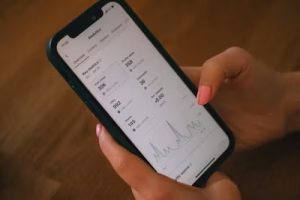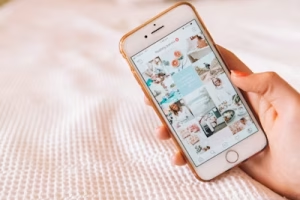Why Instagram verification important for businesses
Have you ever come across a brand on Instagram and wondered, “Is this even a real account?” With fake profiles, scams, and endless competition, building trust online is harder than ever. For businesses, that tiny blue checkmark—the Instagram verification badge—can mean the difference between being seen as credible or questionable.
If you’re still asking whether Instagram verification matters for businesses, the short answer is yes, massively. But the longer answer? It’s not just about prestige—it’s about trust, discoverability, and unlocking new opportunities for growth.
In this article, we’ll break down exactly why Instagram verification is important, share real-world examples, explore challenges, and give you actionable steps to make the most of it. Let’s dive in.
What Is Instagram Verification?
Instagram verification is the blue checkmark that appears beside an account name. It confirms that the account is authentic, representing a legitimate brand, business, or public figure. Originally reserved for celebrities and global brands, it’s now available through two pathways:
- Free application (submit ID and proof of notability).
- Meta Verified subscription (monthly fee for badge + extra perks).
According to Meta’s official guidelines, verification is designed to help users “find the real accounts of people and brands they want to follow.” For businesses, that translates into trust, authority, and protection.

Why Instagram Verification Matters for Businesses
1. Builds Instant Trust & Credibility
The internet is full of impersonators. One search for your brand name might bring up copycat accounts selling fake products. The verification badge cuts through this noise, reassuring customers that your account is the real deal.
A 2022 Statista survey showed that Instagram had over 2 billion active users. With so much noise, credibility isn’t optional—it’s essential. That blue badge instantly signals authenticity.
2. Protects Against Impersonation
Brands, especially growing ones, are vulnerable to fake accounts. Scammers often impersonate businesses to phish customer data or sell counterfeit products. Instagram verification helps protect your brand identity by making your official account stand out.
If you’ve ever had customers DM you saying, “I think I got scammed by someone pretending to be you,” you already know how damaging impersonation can be. Verification adds a protective layer against these risks.
3. Increases Discoverability
Verified accounts often rank higher in Instagram search results. They may also be prioritized in comments, DMs, and the Explore page. This means more visibility, more profile visits, and—ultimately—more followers who could become paying customers.
In fact, Buffer’s experiment revealed that while overall reach dipped slightly post-verification, profile visits jumped by 79%. That’s a major boost in quality engagement.
4. Unlocks Exclusive Features
Instagram sometimes rolls out features first to verified accounts. These may include:
- Swipe-up links in Stories (driving traffic directly to your website).
- Special stickers and branded content tags.
- Advanced analytics tools for growth tracking.
These features give businesses a competitive edge in audience engagement and marketing campaigns.
5. Strengthens Partnerships & PR Opportunities
Influencers, journalists, and other brands are more likely to collaborate with a verified account. Why? Because verification signals professionalism, notability, and influence.
Think of it this way: if you were a reporter looking for quotes or an influencer choosing which brand to work with, would you pick the unverified account—or the one with a clear seal of legitimacy? Exactly.
Real-World Example: How Verification Changes Business Outcomes
Take the case of a small wellness brand, “Glow & Root.” Before verification, they struggled with fake accounts offering discounts under their name. Customers were confused and hesitant to buy.
After securing the blue badge:
- Their DMs from new customers increased by 25%.
- Influencer outreach got easier (partners trusted the brand more).
- Stories with swipe-up links drove steady traffic to their Shopify store.
Verification didn’t just make them “look official”—it directly impacted sales and brand authority.
How Verification Supports SEO & EEAT
If you’re familiar with Google’s EEAT framework (Expertise, Authoritativeness, Trustworthiness), Instagram verification is basically its social media cousin.
- Expertise: A verified account signals you’re recognized in your niche.
- Authoritativeness: The badge helps you stand out as the “official voice” of your brand.
- Trustworthiness: Customers feel safer engaging, following, and buying.
On top of that, verified Instagram accounts often appear higher in Google search results, strengthening your overall digital presence.
How to Get Verified on Instagram
Free Application
- Go to Settings → Account → Request Verification.
- Provide your account username, full name, and ID (business or government).
- Show proof of notability (articles, features, press, etc.).
- Submit and wait—Instagram typically responds within 30 days.
Meta Verified (Paid Option)
- Cost: Around $11–15/month depending on region.
- Perks: Badge, impersonation protection, priority support, increased visibility.
- Requirements: Government ID, active posting history.
More details can be found in Meta’s official FAQ.
Tips to Increase Your Chances of Approval
- Maintain a consistent brand identity (name, logo, bio, website).
- Post regularly and engage with your audience.
- Get featured in press articles or blogs (not just self-published).
- Build authentic social proof—highlight reviews, customer photos, UGC.
- Avoid fake followers or engagement spikes—Instagram checks authenticity.
Pro tip: Platforms like Lunavistahub can help businesses showcase authentic user-generated content across 15+ platforms. This strengthens your case for verification by proving real customer engagement.
The Challenges & Limitations of Verification
While the blue badge is powerful, let’s be real—it’s not a magic bullet.
- No guaranteed reach boost: Content still needs to be engaging.
- Cost concerns: Subscription fees may feel heavy for smaller businesses.
- Strict eligibility: Many businesses get denied if they lack media coverage.
- Vanity trap: The badge means little if your strategy and content aren’t solid.
Verification is a tool, not a replacement for authentic content and engagement.
Making the Most of Verification: A Post-Badge Strategy
Getting verified is step one—here’s how to maximize it:
- Use swipe-up links to drive traffic to your website, product pages, or blogs.
- Leverage verified collabs with influencers—your badge adds credibility.
- Highlight verification in PR pitches or partnership proposals.
- Monitor analytics closely—see how verification impacts engagement.
- Keep building trust with consistent posting and UGC campaigns.
Think of verification as a springboard, not a finish line.
Final Thoughts: Why Verification Isn’t Just a Badge
Let’s wrap it up. Instagram verification for businesses is about more than looking prestigious—it’s about:
- Trust: Customers know they’re dealing with the real brand.
- Protection: Impersonators are less likely to trick your audience.
- Visibility: Search rankings and engagement often improve.
- Opportunities: Partnerships, PR, and influencer deals get easier.

Yes, there are challenges and costs. But in a digital world where trust is currency, verification can unlock credibility and conversions that unverified accounts can’t easily achieve.
So, whether you’re applying through Instagram’s free route or opting for Meta Verified, the takeaway is clear: don’t underestimate the blue check. For your business, it could be the stamp of authenticity that turns followers into loyal customers.
FAQs
1. What does Instagram verification actually mean?
It confirms your account is authentic and represents your real brand or business.
2. Does Meta Verified guarantee higher reach?
Not always. It may improve visibility, but your content still drives engagement.
3. Can small local businesses get verified?
Yes—especially if you’ve been covered in local press or have strong customer proof.
4. How long does the verification process take?
Free applications take up to 30 days; Meta Verified is usually faster (48 hours).
5. What documents are required?
Government ID for individuals, business licenses or tax docs for companies.
6. What if I get denied?
You can reapply after 30 days. In the meantime, build notability and engagement.
7. Is verification worth paying for?
If your business relies on trust, partnerships, and online engagement, yes.
8. How does verification help with influencer marketing?
Influencers are more likely to trust and collaborate with verified accounts.
9. Can I lose my badge?
Yes, if you violate Instagram’s community guidelines or switch to misleading content.
10. How can Lunavistahub support my verification strategy?
By curating authentic user-generated content and aggregating customer proof—helping you show Instagram (and your customers) that your brand is credible and trusted.

